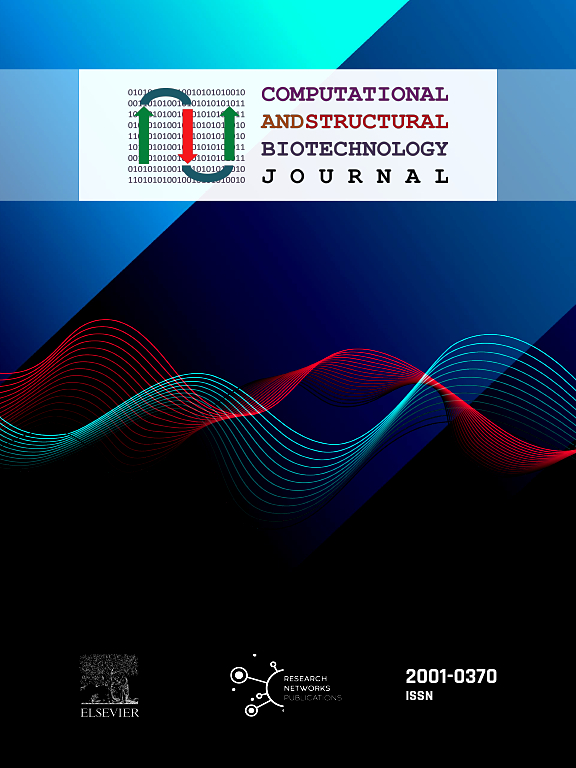医学成像中可推广的联邦学习:乳房x线摄影数据的真实案例研究
IF 4.4
2区 生物学
Q2 BIOCHEMISTRY & MOLECULAR BIOLOGY
Computational and structural biotechnology journal
Pub Date : 2025-01-01
DOI:10.1016/j.csbj.2025.03.031
引用次数: 0
摘要
由于医疗数据不需要离开医院进行人工智能模型训练,因此联邦学习在医疗应用中越来越受欢迎,因为它提供了更多的隐私。然而,将经典实验直接转换为联邦实验并不总是那么简单。在这项工作中,我们深入研究了用于乳腺癌分类工具的联邦学习的复杂性。我们将经典模型训练与联邦变体进行比较,并强调需要注意的调整,以确保两者之间的等价。具体来说,我们引入了乳房区域检测工具作为预处理管道的重要组成部分,通过提供数据协调来增强联邦学习的鲁棒性。在此基础上,我们提出了一个端到端的联邦学习框架,它对现实世界的数据和场景是有效的。在参与实验程序的三家现实世界医院中,所提出的框架显著提高了第一家医院的绩效,提供了与经典方法相似的一致结果。实验结果表明,引入干预措施后,模型性能提高了约35%,使联邦学习和集中式模型性能保持一致。本文章由计算机程序翻译,如有差异,请以英文原文为准。

Towards generalizable Federated Learning in medical imaging: A real-world case study on mammography data
Federated Learning has been rapidly gaining in popularity in medical applications, due to the increased privacy offered, since medical data doesn't need to leave the hospitals' premises for AI model training. However, a direct translation of a classic experiment to a federated one is not always straightforward. In this work, we delve into the intricacies of federated learning for a breast cancer classification tool. We compare classic model training with a federated variant, and highlight the adaptations that need to be taken care of to ensure the equivalence between the two. Specifically, we introduce the Breast Area Detection tool as an essential component of the pre-processing pipeline to enhance the robustness of Federated Learning by offering data harmonization. On top of that, we present an end-to-end Federated Learning framework that is effective for real-world data and scenarios. Among the three real-world hospitals involved in the experimental procedure, the proposed framework significantly improves performance at the first hospital, providing consistent results similar to those achieved in the classic approach. Experimental results demonstrate that the interventions introduced improved model performance by approximately 35%, aligning federated learning and centralized model performance.
求助全文
通过发布文献求助,成功后即可免费获取论文全文。
去求助
来源期刊

Computational and structural biotechnology journal
Biochemistry, Genetics and Molecular Biology-Biophysics
CiteScore
9.30
自引率
3.30%
发文量
540
审稿时长
6 weeks
期刊介绍:
Computational and Structural Biotechnology Journal (CSBJ) is an online gold open access journal publishing research articles and reviews after full peer review. All articles are published, without barriers to access, immediately upon acceptance. The journal places a strong emphasis on functional and mechanistic understanding of how molecular components in a biological process work together through the application of computational methods. Structural data may provide such insights, but they are not a pre-requisite for publication in the journal. Specific areas of interest include, but are not limited to:
Structure and function of proteins, nucleic acids and other macromolecules
Structure and function of multi-component complexes
Protein folding, processing and degradation
Enzymology
Computational and structural studies of plant systems
Microbial Informatics
Genomics
Proteomics
Metabolomics
Algorithms and Hypothesis in Bioinformatics
Mathematical and Theoretical Biology
Computational Chemistry and Drug Discovery
Microscopy and Molecular Imaging
Nanotechnology
Systems and Synthetic Biology
 求助内容:
求助内容: 应助结果提醒方式:
应助结果提醒方式:


